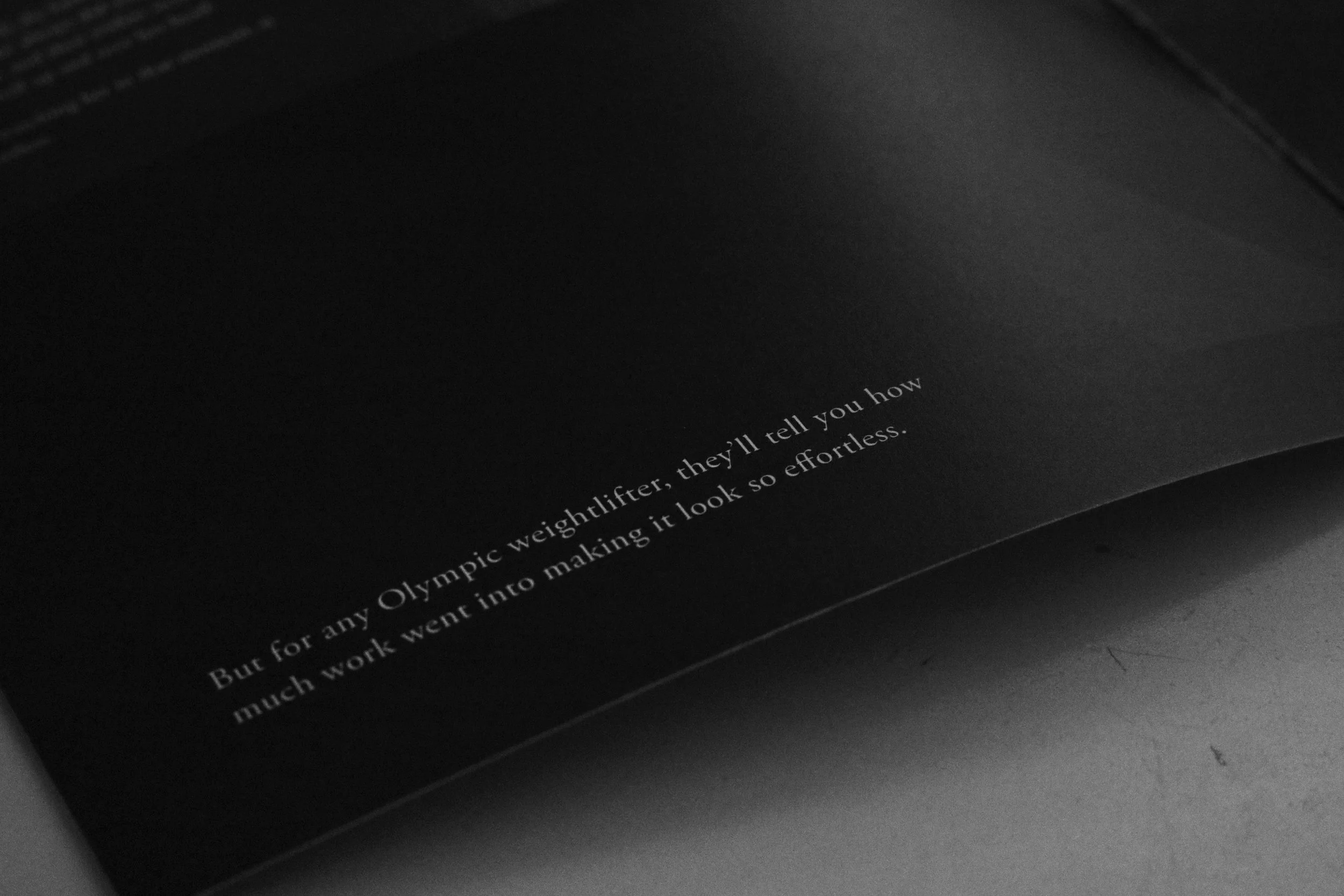attempt no. 3
As an application project for an MFA program at School of Visual Arts, Attempt No. 3 is a visual narrative story about a weightlifting competition from an athlete’s perspective.
Given prompt: a mistake that was made
Deliverable: 6x9” coffee table style book
Read the full story here
(I was accepted to start in the summer of 2020 but decided to forgo the opportunity because of the pandemic).
skills highlighted:
story visualization, creative direction, photography, editorial design, typography, creative writing, visual and written storytelling, and photo editing.
The sport of weightlifting can be cruel. An athlete only gets six attempts on the platform in a competition—three attempts of two different lifts.
Mistakes and failed lifts occur in training and even in competition but it's the mental strength to get back up for that third attempt that brings success.
(cover text)
about the process:
after writing my written story quickly, i thought about what to do my visual narrative story on for a good week with no success. then a day or two before i had a weightlifting competition that weekend, it hit me.
i had very little time to plan but i had a vision and asked one teammate to be my subject, knew (kind of) what i wanted the message to be, and had some rough ideas for photos in my mind. no sketches, no storyboarding, no notes, just running off the ideas in my head, lived experience, anxiety, caffeine, and good vibes.
i’m not what you’d call a photographer but i had a low end digital SLR camera and a 50mm lens and knew what i wanted the story to say. i’m also not what you’d call a writer but i’ve always liked creative writing, blogging, and telling stories about my life via social media. i somehow always had a story.
i did know how to design editorial-style books and zines [and this would be easy to submit digitally]. i didn’t consider anything else; i’ve been obsessed with designing books since the beginning.
we were given a few prompts to choose from for both a visual narrative story and a written story but we had to use the same prompt for both. i knew both of my stories would be partially non-fiction/based loosely on true stories.
mistakes just felt relatable, perfectly flawed, and human and that’s the kinda story i like.
i showed up to the competition that day with my competition gear over one shoulder and my camera and creative mind over the other, taking care of business (the project) first in the session right before my own.
i hadn’t written the story yet but i knew what i had to do and by the end of the session i was confident i got enough photos to tell some kinda story i had experienced multiple times [and especially that day].


